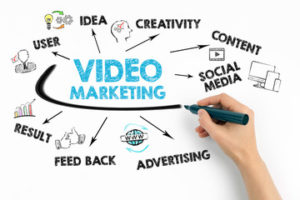
In the recent years, the Internet of Things (IoT) has succeeded in some industries in which even people who are not technologically inclined have started to buy into the convenience, comfort and the valuable information it offers. Many companies use IoT to build their business models to validate how it can improve their competitive growth in the market. The Internet of Things even in its early stages its rate of expansion, adaptability, ingenuity and reach are surprising. The global IT infrastructure will support a trillion devices, large and small. Now, to give you a taste of how IoT applications to transform our everyday lives, let’s take a look at some of the aspects of your day-to-day life that the Internet of Things can influence.
1.Smart cities:
As more people move to cities around the world, the demand for water and energy will be higher and the risk of epidemics of disease, pollution, and traffic congestion will increase. Traffic light cameras can alert a city of the need to adjust lighting timing to keep cars moving and reduce congestion, and instantly notify emergency response. More efficient public transport and traffic control help reduce carbon emissions, making city air less polluted for residents. In entire cities IoT power becoming digital and smarter. Collecting and analyzing massive amounts of data from IoT devices in various urban systems to improve citizen in cities. Smart cities can make better decisions with the data they collect on infrastructure needs, transit demands, crime and security.
2.Logistics:
Logistics companies were among the earliest users of IoT, with drivers using handheld scanners providing real-time delivery notification. We receive a delivery notification on our mobile device and doorbell doesn’t even have to be rung. In the warehouse operations IoT applications is used to ensure correct receipt of goods and optimized storage in order to optimize space and possible picking and in addition, IoT has improved security by providing alerts when the machine and people are nearby. To alert , if the pallet of goods may cause injury or damage the properly if not properly loaded. Wearable devices can help detect exhaustion and fatigue.
3.Iot in agriculture:
Technology providers help farmers with tools like drone imagery and ground sensors, which measure conditions in real time. By installing sensors around the farm and collecting data on temperature, air and soil humidity, water level or by flying drones over fields to collect data, Farmers can reduce water and fertilizer waste by identifying the best time to irrigate, fertilize or harvest. Big data can provide localized weather forecasts based on past weather patterns, which will help farmers make better decisions.
4.Healthcare industry:
The Internet of Things can transform the healthcare industry by helping physicians access patient data faster. The internet-connected sensors that track a patient’s heart rate, pulse, etc., will be compact and accurate. Sensors, and even robotic assistants, can alert caretakers if patients forget to take their medications or don’t leave their rooms at a set time. As mobile technology proliferates in developing countries, healthcare professionals are finding new solutions to deep challenges. In the health industry the IoT help, alert and monitor the patient record.
5.Environment:
In recent times, we are aware of the environment and the damage caused by some human activities. We can use IoT applications to help us with this goal. Some of the areas in which IoT works is bee preservation. Bees face a threat in this polluted world. IoT devices affects the climate change even though can take better charger of preserving hives, by connecting sensors it is possible to track the temperature of the hive and amount of food present in the hives IoT used for waste management.
6.Supply chain:
If you use Amazon or Swiggy, you may be familiar with the tracking system they use to track the delivery of your goods and supply chains have been using IoT applications for some time. The IoT applications is help better for suppliers and drivers for preserving the goods from transit. By communicating information about the temperature and pressure in which the item is kept and the IoT can optimize the workflow by improving the transit of the supply chain.
Conclusion:
IoT applications & technologies in the daily life of our home, transport or city, connect to make life experience more efficient and enjoyable. The IoT promises a better quality of life by performing mundane tasks and improving health and well-being. IoT enables users to make more informed, data-driven decisions about our shared resources. IoT is a revolutionary technology that affects many different industries. The world is slowly turning into a “smart” world with IoT applications. IoT can reduce waste and improves service delivery, reducing the cost of manufacturing ,delivering goods and ensuring transparency in transactions with customers. We will have to deal with privacy and security issues related to personal data and automated decision-making. In our next decade, IoT has a huge impact to be expected.




